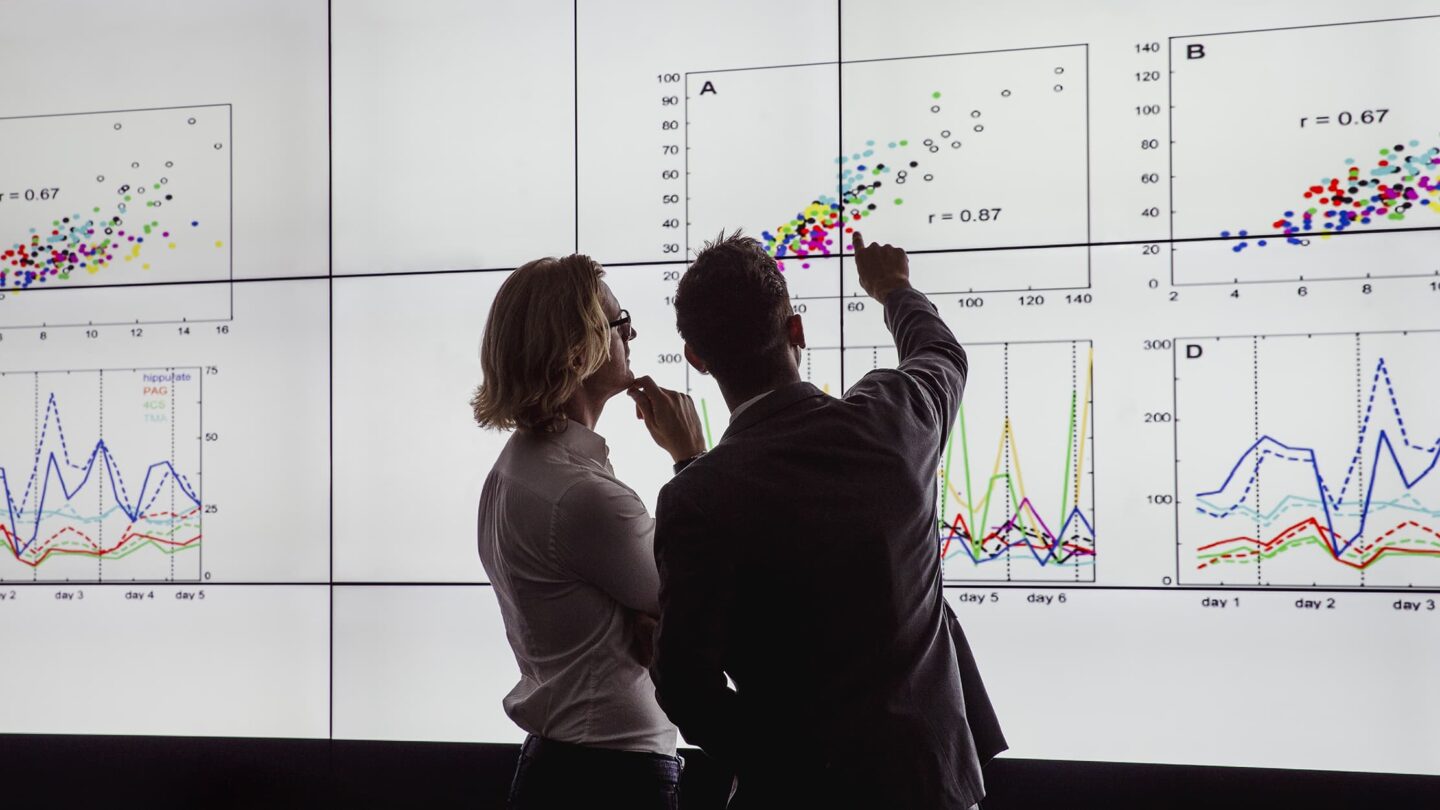Money Matters
Modernize your forecasting: SaaS forecasting for CFOs
Revolutionize your financial planning process with cutting-edge SaaS forecasting tools. Our guide explores the benefits of automated forecasting for CFOs.

SaaS revenue and sales forecasting is THE foundationally important activity for any recurring revenue organization. It enables you to know your likely financial outcomes in advance, which allows you to finetune your decision-making for maximum recurring revenue. This means SaaS forecasting–and embracing modern techniques like automated sales forecasting–is critical to your long-term profitability and pipeline optimization.
In this post, we’ll be discussing the next generation of SaaS forecasting. What tools, perspectives, and strategies form the basis of high-performance forecasts? And what are the potential costs of settling for manual, outdated forecasting tools?
Let’s begin by examining the differences between accounting, and financial planning and analysis (FP&A). It’s a distinction that’s critical for forecasting purposes.
Accounting vs. FP&A (a comparative template)
The finance department in a SaaS company is broken down into two broad categories of activities and objectives. The first of these is accounting, which tends to be backward-looking. The purpose of accounting is to accurately capture information about transactions and finances for later reference.
Sometimes this information is recorded to be consulted later, such as SaaS metrics or subscription revenue. In other instances, the data is kept in case of auditing, even if it won’t be consulted in any other instance. An example would be using automated software to track why a payment relationship changes with a customer.
You might not personally need that information any time soon, but you’ll certainly need to prove that you have it when you’re undergoing a compliance audit.
Other examples of accounting activities include:
- Carrying out accurate and comprehensive financial reporting.
- Ensuring compliance with ASC 606, IFRS 15, and all other applicable regulations. (Handling this manually can be very time-consuming.)
- Overseeing tax responsibilities, such as preparing detailed financial statements and taking care of any multi-entity accounting considerations your organization might have.
At the other end is FP&A–and remember, it’s important to think of these as two sides of the same coin. Accounting is about accurately recording the past, but FP&A prioritizes future revenue, and SaaS forecasting plays a significant role in that.
FP&A activities center on helping the organization gain market share, cut churn, or otherwise consolidate its position by:
- Running automated forecasts to formulate profitable business plans. This is also a great way to capitalize on seasonality or similar time-sensitive trends revealed by your sales data.
- Interfacing with other stakeholders and business leaders to provide metrics about their teams’ performance.
- Taking charge of SaaS billing optimization by forecasting adoption rates and revenue results for pricing strategies.
Accounting lays the foundation for profitable FP&A, which paves the way to long-term profitability and stellar sales performance.
How does SaaS forecasting fit into FP&A?
SaaS forecasting represents one of the most critical activities of your finance department. So it’s worthwhile to consider how it fits into the broader FP&A picture.
Minimizing financial uncertainty from external factors is the primary goal of FP&A. To accomplish that, finance leaders run “if-then” forecasts about a wide range of scenarios and business components, such as:
- Forecasting different billing scenarios: Finetuning your billing strategy is one of the most pivotal aspects of FP&A. It’s also a great way to lower your churn rate. Automation makes it simpler to run detailed forecasts to find the best billing model and enhance risk management at your company.
- Maximizing discount campaign results: SaaS companies sometimes run discount campaigns to encourage many people to sign up quickly and lower their short-term customer acquisition cost (CAC). Ensuring the most profitable results for your sales campaigns depends on forecasting beforehand.
- Extrapolating on user trends: Trend extrapolation is one of the most valuable applications of SaaS forecasting. These days, SaaS CFOs are expected to be strategic contributors on the same level as other C-suites. Helping your company get a clearer picture of user sentiment and resulting trends accomplishes that in spades.
To better understand the forecasting function in a SaaS accounting department, we need to take a step back and look at the broader FP&A lifecycle.
SaaS forecasting: the FP&A lifecycle
Even though SaaS forecasting is one of the most essential parts of FP&A, it’s still just one part of the overall process. FP&A comprises four steps: plan, analyze, report, and forecast.
Let’s review each one and see how it relates to SaaS forecasting.
1. Plan
The first step is to make a plan. This involves a range of financial activities: building forecast models, creating budgets, collecting user data, and defining KPIs all fall into this stage of the FP&A lifecycle.
The planning stage is essential because it lays the foundation for effective SaaS forecasting. If you want to forecast how your users will act under certain conditions in the future, you need access to past data as a starting point to create comparative scenarios. The same goes for forecasting your annual recurring revenue or seeing how you’ll perform in the face of prevailing economic trends.
2. Analyze
The second stage of the FP&A loop calls for analyzing the data you collected during the planning stage. In the context of budgeting, for example, this would entail comparing your projected budget to your actual expenditures.
This is also the stage where you double-check or change your starting assumptions as needed, whether that’s adjusting budget inputs, altering KPI selection, or something else.
3. Report
The reporting stage of the FP&A lifecycle involves getting the right financial data to the right people in the most straightforward way possible. Role-based dashboards are a highly effective way of making that happen.
SaaS CFOs use financial storytelling techniques and automated accounting suites to improve their financial reporting. Sometimes teams circle back to the reporting stage even after they’ve done their SaaS forecasting, to review and explain their forecasting results to the board.
4. Forecast
The fourth stage of the FP&A lifecycle is forecasting. At this stage, SaaS CFOs and other finance leaders run detailed comparative analyses on different financial scenarios. For instance, say your team recently created a report on how your new billing model is performing.
The next step would be to test what your results would be in the future. Given the data in your report, how will things look 3-6 months from now? Do changes need to be made? If you were to lower or raise your prices slightly, what impact would that have over the next quarter? These are the types of questions that SaaS forecasting helps finance leaders answer confidently.
Have you outgrown Excel for SaaS forecasting?
It’s more than worth your time to closely examine the tools you trust to help you run forecasts. Leaving your company’s forecasting to manual spreadsheet-based approaches can have negative cash flow consequences, so it’s important to consider different methods.
Since forecasting is so fundamental for SaaS companies, variance from human error can lead to:
- Unusable campaign projections or product rollout forecasts.
- Other departments like sales and marketing operating on false information.
- Budget shortfalls that impact corporate growth initiatives.
Relying on spreadsheets for your forecasting can quickly land you in a sticky situation. The automation process is more trustworthy. Let’s look at some other common problems with manual SaaS forecasting.
Having a single point of failure around forecast model creation
When companies handle their forecasting manually, they tend to have one person in charge of creating forecast models. This is one of the key challenges in common across companies that handle their forecasting model creation manually.
What happens if that person leaves the company? Even if you can replace them relatively quickly, you’re still likely to see your forecasting slow down for a while.
Getting stuck in the past rather than proactively planning for the future
Done manually, SaaS forecasting involves a lot of backward glances before you can start looking forward. You have to verify and review all the historical data involved in the process before you can use it for accurate financial forecasting.
This usually means spending too much time on the accounting side and not enough on forward-focused FP&A.
Losing weeks of productivity to manual data management
Manual SaaS forecasting is a huge time sink. Between manually collecting, cleansing, and aggregating financial data, Excel-based forecasting is a non-starter.
With all this in mind, what can you do to optimize your SaaS forecasts for today’s competitive market?
SaaS forecasting: tips for the modern CFO
The most effective CFOs get extremely detailed with their forecasting. They consider everything from the forecasting process to how their forecasting efforts impact other departments.
Here are a few quick tips on how to make the most of your forecasting.
Embrace financial process automation and ML for pipeline forecasting
Artificial intelligence and machine learning help teams do more work in the same period of time. Automated forecasting makes long-range, low-variance forecast creation as simple as plugging in your data and pressing a button.
Build bridges with key stakeholders
No CFO exists in a vacuum, and no accounting department does either. Take the time to connect with other stakeholders and department leaders about forecasting. What business drivers do they want to see forecasts on? How can you help their team meet its goals?
Focus on your high-impact areas to boost MRR and ARR
One of the most crucial parts of forecasting is isolating your core business drivers. What are the few vitally important aspects of your business that contribute to growth in an outsized way? Whether it’s your product pricing, your ability to retain a particular user segment, or something else, you need to identify your “business levers.”
If you don’t know which business levers will have the most positive impact, it’s hard to get granular about your SaaS revenue forecasting.
Is your SaaS forecasting getting the results you need?
Forecasting can help your SaaS business thrive in any external market condition by allowing you to know your likely financial outcomes in advance. Whether you’re planning a change in your pricing structure, forecasting user trends, analyzing upsell results, or something else, accurate forecasts make all the difference.
The Modern SaaS Finance Academy offers CFOs of fast-growing SaaS companies the chance to get hands-on training with cutting-edge forecasting techniques. The academy also offers a generous selection of digital courses on topics like sales pipeline optimization, honing your leadership skills, creating a usage-billing business, and much more. Patterned off the success of the Hubspot Academy, but built for SaaS CFOs, Controllers, FP&A, RevOps, and CEOs, it is free and offers the option of CPE credits.
To join the academy and start improving your forecasts today, click here.
Modern SaaS Finance Academy
The Modern SaaS Finance Academy is a free online training hub designed for CFOs, Controllers, FP&A, Revenue managers, Revenue Operations, and other members of the finance community in fast growth SaaS companies.








Ask the author a question or share your advice